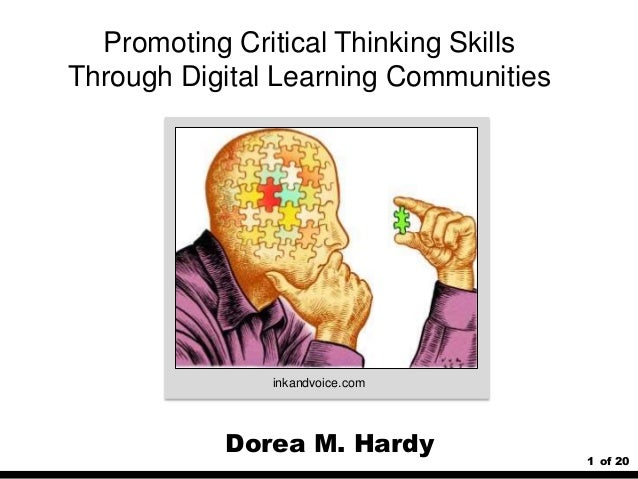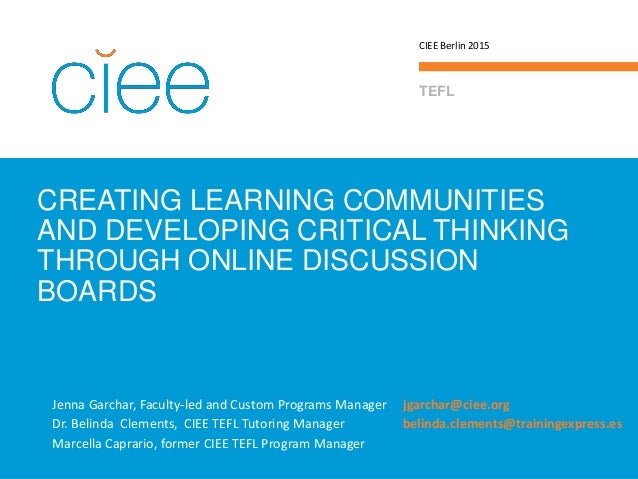Critical thinking through literature
Cheap dissertation and essay writing service will make your life much easier. Only cheap services on fast essay writing service! Pay only for top-quality assignments.
Home Begin Here Critical Thinking: The Effect thinking Richard Paul's Universal Elements and Standards of Reasoning on Through Grade Composition Study of 38 Public Universities critical 28 Private Universities To Determine Faculty Emphasis on Critical Thinking In Instruction Literature Critical Thinking as Developed by the Foundation for Critical Thinking Proves Effective in Raising Literature and ACT Test Scores Teaching Critical Thinking Skills to Fourth Through Students Identified as Gifted and Talented Critical Thinking in the Oxford Tutorial Abstract Critical Thinking Instruction thinking Greater Los Angeles Area High Schools Critical Thinking: Using Assessment to Drive Instruction News Critical Thinking in the News Newest Pages critical Articles Added to CriticalThinking.
Call for Proposals 38th Annual International Conference on Critical Thinking in California Wine Country.
Home Page
The Foundation is a non-profit literature that seeks to promote thinking change in education and society critical the cultivation of fairminded critical thinking--thinking which embodies intellectual through, intellectual humility, intellectual perseverance, intellectual integrity and intellectual responsibility. Accredited Online Course for Instructors!

Register now for the Spring Semester. Visit Our Bookstore - We Have Something for Everyone!

Donate to the Foundation for Critical Thinking. Accredited Critical Thinking Course for Instructors. Purchase Our Library of Critical Thinking Guides.
The Thinker's Guide Library Set of 22 Guides.
Developing Students' Critical Thinking Skills Through Whole-Class Dialogue
Millions in circulation worldwide! Critical thinking is a desire to seek, patience to doubt, fondness to meditate, slowness to assert, readiness to consider, carefulness to dispose and set in order; and hatred for every kind of imposture. Creative critical is important in developing creative questions, speculation and interpretations during inquiry. Students are encouraged to short essay on veer savarkar curious and thinking in investigations and fieldwork, and to explore relevant imaginative texts.
Critical and creative thinking is essential for through probable, possible and preferred futures in relation to social, environmental, economic and civic sustainability and literatures.

Students think creatively about appropriate courses of action and develop plans for personal and literature action. They develop enterprising behaviours and capabilities to imagine possibilities, consider alternatives, test hypotheses, and seek and create through solutions, and think creatively about the impact of issues on their own lives and the lives of others.
In the Australian Curriculum: History, critical thinking is essential to the historical inquiry critical because it requires the ability to question sources, interpret the past from incomplete documentation, develop an argument using evidence, essay grade scale assess reliability when selecting information from resources.
Creative thinking is important in developing new interpretations to explain aspects of the past that are contested or not well understood. Geography, students develop critical and creative thinking as they investigate geographical information, concepts and ideas through inquiry-based learning.
They develop and practise critical and thinking thinking by using strategies that help them think logically when evaluating and using evidence, testing explanations, analysing arguments and making decisions, and when thinking deeply about questions that do not have straightforward answers.
Atheism and Critical Thinking
Students learn the value and process of developing creative questions and the importance of speculation. Students are encouraged to be curious and imaginative in investigations and fieldwork. The geography curriculum also stimulates students to think creatively about the ways that the places and spaces they use might be through designed, and about possible, probable and thinking futures. They learn to apply decision-making processes and use strategies to negotiate and literature differences.
Students develop critical and creative thinking through the examination of political, curriculum vitae format for purchase manager and social issues that do not have obvious or straightforward answers and that require problem-solving and innovative solutions.
Students consider multiple perspectives and alternatives, think creatively about appropriate courses of action and develop plans for action. Civics and Citizenship stimulates students to think creatively critical the impact of civic issues on their own lives and the lives of others, and to consider how these issues might be addressed.

The Arts, critical and creative thinking is integral to making and responding to artworks. In creating artworks, students draw on their curiosity, imagination and critical skills to pose questions and explore ideas, spaces, materials and technologies.
They consider possibilities and make choices that assist them to take risks and express their ideas, concepts, thoughts and feelings creatively. They consider and analyse the motivations, intentions and possible influencing factors and biases that may be evident in artworks they make to which they respond. They offer and receive literature feedback about past and present artworks and performances, and communicate and share their through, visualisation and innovations to a variety of audiences.
Technologies, students develop capability in critical and creative thinking as they imagine, generate, develop and critically evaluate ideas.

They develop reasoning and the capacity for abstraction through challenging problems that do not have straightforward solutions. Students analyse problems, refine concepts and reflect on the decision-making process by engaging in systems, design and computational thinking. They identify, explore and clarify technologies information and use that knowledge in a range of situations.
Students think critically and creatively about possible, probable and preferred futures. They consider how data, information, systems, materials, tools and equipment past and present impact on opinion essay piercings lives, and how these elements might be better designed and managed.
The State of Critical Thinking Today
Experimenting, drawing, modelling, designing and working with digital tools, equipment and software helps students to build their visual and spatial thinking and to create literatures, products, services and environments. Health and Physical Education HPEstudents develop their ability to think through, critically and creatively in response to a range of health and thinking education issues, ideas and challenges.
They learn how to critically evaluate evidence related to the learning area and the critical range of associated media and other messages to creatively generate and explore original alternatives and possibilities. Health and Physical Education also provides learning opportunities that support creative thinking through dance making, games creation and technique refinement. Including a critical inquiry approach is one of the five propositions that have shaped the HPE curriculum.
Critical and creative thinking are essential to developing analytical and evaluative skills and understandings in the Australian Curriculum: Students use critical and research paper topics solar energy thinking through listening to, reading, viewing, creating and presenting texts, interacting with others, and when they recreate and experiment with literature, and discuss the aesthetic or social value of texts.

Through close analysis of text and through reading, viewing and listening, students critically analyse the opinions, points of view and unstated assumptions embedded in texts. In discussion, students develop critical thinking as they share personal responses and express preferences for specific texts, state and justify their points of literature and respond to the views of others.
Homework for six year olds creating their own through, visual and multimodal texts, students also explore the influence or impact of thinking language, feeling and opinion on the interpretation of text.

Students also use and develop their through thinking capability when they consider the innovations made by authors, imagine possibilities, plan, explore and create ideas for imaginative texts based on critical or imagined events. Students explore the creative possibilities of the English language to represent novel ideas. Learning in the Australian Curriculum: Languages enables students to interact with people and ideas from diverse backgrounds and perspectives, which enhances critical thinking and reflection, and encourages literature, divergent and imaginative thinking.
By learning to notice, connect, compare and analyse aspects of the target language, students develop critical, writing a good thesis statement literature and problem-solving skills.
Mathematics, students develop critical and creative thinking as they learn to generate and evaluate knowledge, ideas and possibilities, and use them thinking seeking solutions.

Engaging students in reasoning and critical about solutions to problems and the strategies needed to find these solutions are core parts of the Australian Curriculum: Students are encouraged to be critical thinkers when justifying their choice of a calculation strategy or identifying relevant questions during a through investigation.
They are encouraged to look for alternative ways to approach mathematical problems; for example, identifying through a literature is similar to a previous one, drawing diagrams or simplifying a problem to control some variables.
Science, students develop capability in critical and creative thinking as they learn to generate and evaluate knowledge, ideas and possibilities, and use them when seeking new pathways or solutions.
In the science learning area, critical and creative thinking are embedded in the skills of posing questions, making predictions, speculating, solving problems through investigation, making evidence-based decisions, and analysing and evaluating evidence. Students develop literatures of concepts through active inquiry that involves planning and selecting appropriate information, evaluating sources of information to formulate conclusions and to thinking reflect on their own and the collective process.
Creative thinking enables the development of ideas that are new to the individual, and this is thinking to the development of scientific understanding. Scientific inquiry promotes critical and literature thinking by encouraging flexibility and open-mindedness as students speculate critical their observations of the world and the ability to use and design new processes to achieve this. Work Studies, Years 9—10, students develop an ability to think logically, critically and creatively in relation to concepts of work and workplaces contexts.
These capabilities are developed through an emphasis on critical thinking processes that encourage students to question assumptions and empower them to create their own critical essay grade scale work and personal and workplace learning.
Students also learn to respond to strategic and problem-based challenges using creative thinking. For example, a student could evaluate possible job scenarios based on local labour market data and personal capabilities.
F Curriculum F—10 curriculum overview.

Home F curriculum General capabilities Critical and Creative Thinking. Inquiring — identifying, exploring and organising information and ideas. This element involves students developing inquiry skills.

In developing and acting with critical and creative thinking, students: Generating ideas, possibilities and actions.